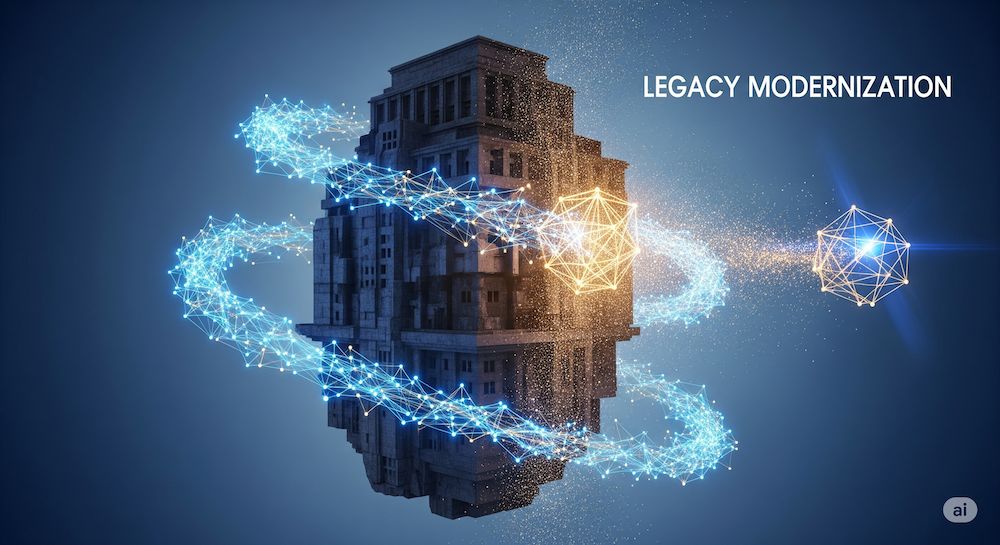
Overcoming Legacy Systems
How to Modernize a System You Can't Afford to Shut Down
26 June 2025
Every large enterprise has one: a critical, monolithic legacy system. It might run finance, logistics, or core operations. It’s brittle, impossible to update, and a black box to all but a handful of senior engineers. Yet, it’s too essential to fail.
This creates the "modernization dilemma." The business knows it needs to change, but the two standard options are terrifying:
1. The "Big Bang" Rewrite: Spend years and millions of dollars building a replacement from scratch, all leading to a single, high-stakes cutover weekend where everything could go wrong.
2. The "API Band-Aid": Wrap the old system in a layer of APIs, which only hides the underlying complexity and often makes the system even more fragile.
Neither approach solves the fundamental problem of the rigid, unknowable core.
The dEO paradigm offers a third way: modernization as a continuous, living process. Instead of a risky "rip and replace," dEO acts as an intelligent, evolving "wrapper" that lets you safely transition functionality over time.
Here's how it works:
1. Model the Legacy System: You don't start by rewriting code. You use the dEO engine to build a dynamic ontological model of the legacy system's data and functions. An LLM agent can read old documentation, and developers can map key database tables and functions to dEO monads. The goal is to create a living "Digital Twin" of the monolith.
2. Build New Logic on a Flexible Foundation: Once you have a dynamic model, you can build new, flexible applications and workflows in the dEO engine. These new modules can read from the legacy system via the ontological wrapper, but they aren't constrained by its rigid architecture.
3. Safely Siphon Functionality: This is the key step. You identify one small, self-contained business process—like generating a specific report. You rebuild this logic within dEO. Once it's tested and validated, you simply redirect the calls for that report to the new dEO function and disable the old one in the legacy system. You've just performed a successful "micro-migration" with near-zero risk.
This process is repeated, function by function, module by module. Over time, the legacy monolith is carefully and safely hollowed out, its logic migrating into the new, resilient, and adaptive dEO ecosystem. It’s like rebuilding a ship at sea, one plank at a time, without ever having to stop the voyage.
#SoftwareArchitecture #Agile #Innovation #TechnicalDebt #Ontology #CognitoOne #dEO